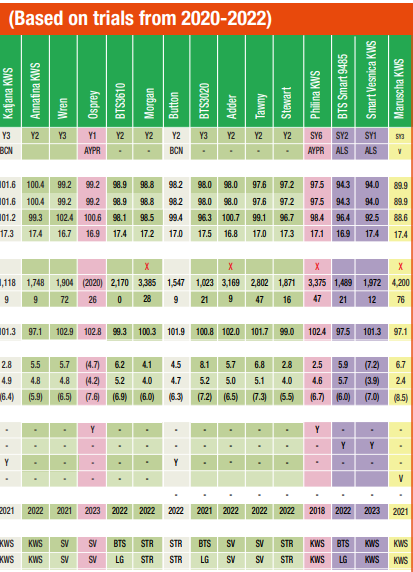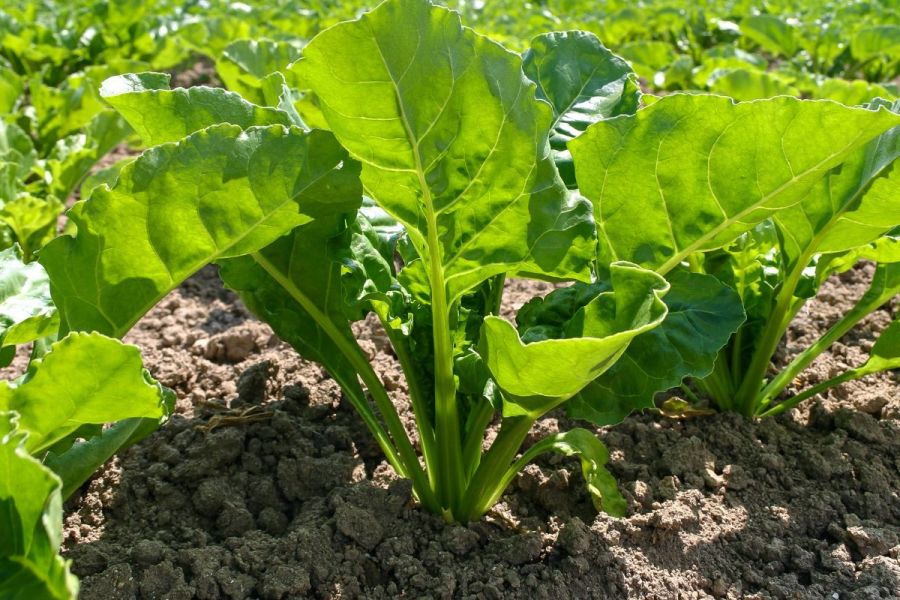Even with just two new sugar beet varieties added to the Recommended List for 2024 and five withdrawals, there’s still plenty to choose from. CPM takes a glance at what the two new arrivals have to offer.
“The least significant difference shown on the RL is 3.8%, meaning there is very little significant difference between the top 10 varieties.”
By Lucy de la Pasture
Of all the decisions facing sugar beet growers, variety choice may not be one of the most challenging, particularly as there’s no guarantee grower selection will match what’s allocated. All the same, breeders continue to bring forward improvements, with two new additions added to the BBRO/BSPB Recommended List for 2024.
Weather conditions last spring and summer provided a challenge for sugar beet trials, says Mike May, chairman of the RL board. “The 2022 trials were subjected to a very dry summer and this was one of the major factors that affected establishment of two of the eight RL trials, which weren’t taken to harvest.
“One of the harvested trials was rejected by the statisticians owing to variability in growth across the site. There were six breeder-funded National List trials sown with four suitable for harvest,” he adds.
All of the RL trials were sown at 9cm spacing and then gapped, while all the National List trials harvested had been sown to a stand following commercial practice. Harvest of the NL trials was completed by mid-October and the RL by mid-November.
Both new additions to the RL bring special traits with them. Osprey from SESVanderHave UK is AYPR tolerant, so has the ability to withstand this more aggressive form of rhizomania. But its advantages don’t stop there, according to its breeder’s UK manager, Ian Munnery.
“To grow sugar beet successfully it’s all about establishment, establishment, establishment,” he emphasises. “Commercially you don’t want patchy crops.
“In the RL trials pre-gapping, Osprey has a 102.8% (of control) establishment which is up with the best of them. However, the RL protocol in 2022 was for the plots to then be thinned out, a practice which can mask the robust establishment our varieties and seed pellets deliver.
“More plants are obviously advantageous to growers in a field situation, something we continue to deliver upon with our genetics and seed processing. It’s why the National List only drills to a final stand to mirror commercial practice.”
Ian also highlights that while Osprey confers a yield advantage over Philina KWS, which is the only other AYPR tolerant variety on the RL, the trait also brings advantages in a non-rhizomania situation. “The genetics provides root benefits even in a non-rhizomania situation, helping both rooting and establishment, which enables nutrient uptake and resilience to drought. It’s a variety with built-in rooting robustness,” he says.
“Digging into our regional trials data, Osprey, Wren, Tawncy and Adder also give a good account of themselves. These figures show up the true variation in regional performance and soil type, which with more extreme climate forecast will become more critical that simply looking at the average across the UK.”
Osprey had a respectable 16.9% sugar content in the trials and a robust cercospora resistance rating of 7.6, only exceeded by Maruscha KWS, though all the foliar disease ratings are based on limited data. “The over-riding foot note is that the least significant difference shown on the RL is 3.8%, meaning there is very little significant difference between the top 10 varieties,” adds Ian.
Also new to the RL for next spring is another Conviso Smart variety from KWS – Smart Vesnica KWS. This further evolution in ALS tolerant varieties achieved 94.0% adjusted yield in the trials with a high sugar content of 17.4%.
“Smart Vesnica KWS is a great addition to the RL for 2024 and provides sugar beet farmers improved yield and bolting characteristics compared to Smart Rixta KWS,” says the sugar beet breeder’s country manager, Ben Bishop.
“It’s best suited to drilling from mid-March onwards to reduce vernalisation and shows good tolerance to both rust (rating of 7.2) and cercospora (rating of 7).”
The RL protocol doesn’t differentiate between ALS-tolerant and susceptible so in the trials they’re treated with conventional herbicides. This means the RL yield data isn’t representative of farming practice, when a dedicated Conviso One herbicide is used.
“Smart Vesnica KWS offers farmers an alternative approach to controlling weeds in their sugar beet crops and will support the increasing demand for this technology,” says Ben. “In 2023, we’ll continue our extensive UK trials network, to include replicated plot trials which demonstrate the yield benefit from using Conviso One herbicide (which is not used in RL trials) with these varieties, as well as field scale demonstration sites to showcase potential new varieties.”
Five varieties were withdrawn which means the 2024 list comprises 19 varieties.

This article was taken from the latest issue of CPM. For more articles like this, subscribe here.
Sign up for Crop Production Magazine’s FREE e-newsletter here.




